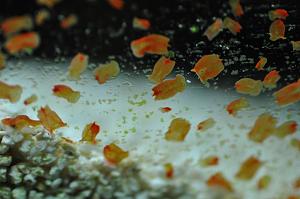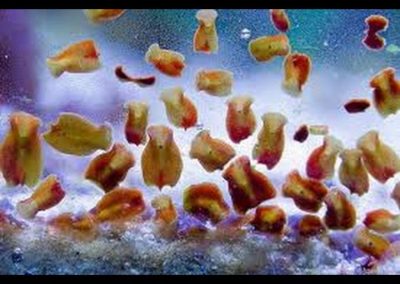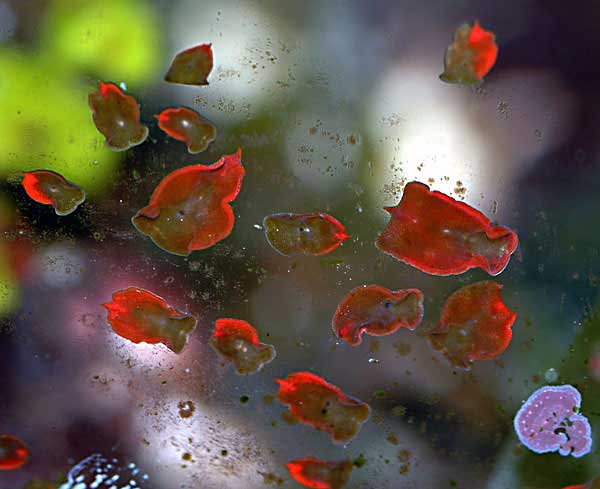Introduction to Red Flatworms:
Red Flatworms go by several different names; Convolutriloba retrogemma, red planaria, rust flatworms, and some refer to them as just flatworms. These terms are loosely used to describe flatworms that proliferate rapidly in aquariums with elevated nutrient levels, and low water flow.
These pests can increase to a point where they will actually cover corals, and block the light from reaching the corals’ zooxanthellae, slowly starving the coral to death. Flatworms may actually feed on the zooxanthellae from coral tissue.
What Red Flatworms looks like:
Convolutriloba retrogemma are known in the hobby as red planaria although they are tan, brown or rust colored.
Convolutriloba retrogemma have a red dot about three-quarters of the way down the body of the flatworm. The presence of three lobes at the tail end of this animal is the unique identifier of Convolutriloba retrogemma.
Typical size is about 1 mm to 3 mm in length.

Signs of infestation:
Red Flatworms can be seen on the surface of corals and in low flow areas of the reef aquarium.
Life Cycle of Flatworms:
Flatworms asexually reproduce, meaning that just one flatworm is needed for reproduction. This allows them to reproduce quickly; creating a problem in the aquarium.
Prevention:
A quarantine tank is the only way to prevent these flatworms from becoming an unsightly attraction in your reef tank. Ideally, all corals should be left in quarantine for 3 months.
During the quarantine time, you should view the coral on a daily basis and watch for any flatworms in the tank. Theses flatworms congregate on the surfaces of corals. Whether or not quarantine is an option, a dip in CoralRx is highly suggested.
Treatment:
These flatworms are very difficult to eliminate should an outbreak occur. The toxic nature of the flatworm makes most in-tank treatment risky at best. Prevention is the only way to make sure your tank is free of this flatworm.
If you have an outbreak:
- Remove as many flatworms as possible using a siphon, then dip each coral in CoralRx.
- After 5 – 10 minutes, remove the coral and discard the coral dip. Do not reuse the coral dip as red flatworms will release a strong toxin which is known to be detrimental to marine life.
- Rinse coral with clean saltwater and return to the aquarium.
- Repeat until flatworms are at a reasonable level. Adding multiple six line wrasses will be of some help in keeping red flatworms under control.
Be sure to dip corals in CoralRx before trading them with other hobbyists.






